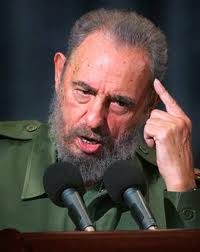“For the past few years, I have resigned myself to every six months seeing all that sustains me…cut in half.”
 Cuba in 1992, the setting of this novel, is a “Special Period,” according to Fidel Castro. The Soviet Union, which has supported the island for years, has collapsed, and the country is starving. Gasoline is scarce, there are constant blackouts, meat and cheese have disappeared, and people have given up smoking so that they can go on eating. When they are lucky enough to find coffee, they dry and reuse the grounds four or five times. Still, there are principled young people like Dr. Manolo Rodriguez who believe in the Revolution and dedicate their lives to helping the poor. Though he has been offered a job which would pay him more money and provide him with some “perks,” he prefers to stay at the clinic he has set up for the poor in the basement of the building where he lives in a one-room attic apartment.
Cuba in 1992, the setting of this novel, is a “Special Period,” according to Fidel Castro. The Soviet Union, which has supported the island for years, has collapsed, and the country is starving. Gasoline is scarce, there are constant blackouts, meat and cheese have disappeared, and people have given up smoking so that they can go on eating. When they are lucky enough to find coffee, they dry and reuse the grounds four or five times. Still, there are principled young people like Dr. Manolo Rodriguez who believe in the Revolution and dedicate their lives to helping the poor. Though he has been offered a job which would pay him more money and provide him with some “perks,” he prefers to stay at the clinic he has set up for the poor in the basement of the building where he lives in a one-room attic apartment.

Manolo lives alone. Unable to get a visa so he could do his four-year residency in South Africa with his physician wife, he found himself abandoned when she moved on. He suffers constant migraines, and the curiosity of those he meets because of a round, red, birthmark-like swelling on his face. When Julia, a young “jinatera,” comes to the clinic for an HIV test, and then later reappears on his doorstep, trying to hide from the men who have been controlling her life, Manolo is drawn into a maelstrom of new issues which turn his world upside down, and he soon finds himself part of a murder investigation and on the run from thugs seeking revenge.
Arellano, an American of Cuban descent who has made ten trips to Cuba since 1992, creates a vibrant picture of the hard lives of ordinary citizens during the Special Period. Prostitution, drug-running, and thievery are rampant in the cities–anything goes, if it will produce enough money to provide food for another day–while the more comfortable bureaucrats and police have their own money-making schemes on the side. Mano’s idealism is put to the test as he tries to keep his clinic going, his life in order, and his world clean, a task he sometimes thinks is hopeless.
 In crisp sentences filled with naturalistic detail, Arellano creates a dark portrait of Cuban life, emphasizing Manolo’s deep loneliness as he tries to get along in his society and make his contribution. Switching back and forth in time, from 1992 to 1989, when Mano married Elena, and 1979, when Mano’s mother died, Arellano recreates moments in time, showing the contrasts between Cuban city and country life as the various characters find their own ways of coping with the economic disasters affecting their lives, sometimes resorting to superstition and witchcraft as they seek supernatural help. Though the novel is gritty, it is no political screed. Arellano has chosen instead to provide a thoughtful look at a dark period, emphasizing the resilience of the Cuban people and their hopes for a better future.
In crisp sentences filled with naturalistic detail, Arellano creates a dark portrait of Cuban life, emphasizing Manolo’s deep loneliness as he tries to get along in his society and make his contribution. Switching back and forth in time, from 1992 to 1989, when Mano married Elena, and 1979, when Mano’s mother died, Arellano recreates moments in time, showing the contrasts between Cuban city and country life as the various characters find their own ways of coping with the economic disasters affecting their lives, sometimes resorting to superstition and witchcraft as they seek supernatural help. Though the novel is gritty, it is no political screed. Arellano has chosen instead to provide a thoughtful look at a dark period, emphasizing the resilience of the Cuban people and their hopes for a better future.
Notes: The author’s photo appears on his Goodreads page: http://www.goodreads.com
The photo if Fidel Castro appears on http://cubacenter.org/en
